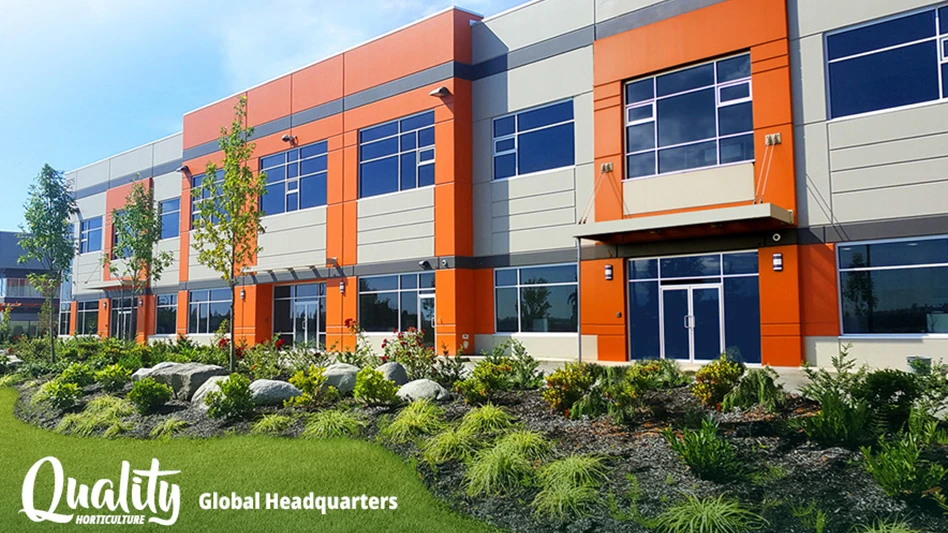
The Ohio State University College of Food, Agricultural and Environmental Sciences held the annual Greenhouse Management Workshop this January. This year’s workshop was a virtual event, focusing on integrated disease and insect management. Spanning three days, the workshops featured sessions by industry experts, many of them from OSU.
Controlled environment agriculture: An overview
Kicking off the workshop on the morning of Wednesday, Jan. 26 was Dr. Chieri Kubota’s presentation “Controlled environment agriculture: An overview.” Kubota is a professor of horticultural and crop sciences at OSU. Kubota does research in CEA, and the mission of her lab is “To serve for science-based technology development” in the CEA space and “to translate scientific understanding and discoveries into innovative applications.”
“I really want to contribute to the industry in the U.S. and beyond,” Kubota said.After giving an overview of her lab and experience, Kubota gave a brief definition of CEA as “a plant production under some sort of controlled environment. It could be fully controlled like a vertical farm, it could be passively controlled like high tunnels, and then many growers want to do extended season production or offseason production using CEA technology.” Kubota explained that with the combination of environmental controls and protections, extended growing season and the ability to optimize the growing environment, growers can achieve extremely high yields with high quality crops. And with enough protection and control, you can grow anything anywhere anytime of the year.
Even in a place with as wide variety in seasons and weather in Ohio, CEA allows for consistent, quality production. “You can create the same climate, same microclimate year-round,” Kubota said. “We don’t need to worry about cloudy weather or cold weather or anything like that, so it is really consistent quality. I think that’s why it’s expanding.”
To give an idea of the landscape of CEA in the U.S., Kubota shared data the USDA published in 2019 that broke down U.S. greenhouse cultivation area and use by the type of crop. This data showed that the vast majority of greenhouse crops grown in the U.S. were ornamental, with little room for food crops. Sixty-three percent of greenhouses grew “floriculture and breeding crops.” Meanwhile, food crops accounted for a mere 9%, though this number does continue to grow. Of this 9%, greenhouse tomatoes accounted for a majority, making up a total of 5% of a greenhouse-grown crops in the US.
Perennial problems of annual plants: Identification & management
Following Kubota’s session was Dr. Francesca Hand’s presentation, “Perennial problems of annual plants: Identification & management.” Hand is an associate professor of plant pathology at OSU.
“It's virtually impossible to cover all problems of annual plans in one presentation,” Hand said, “so I focused my attention on some foliar stem and root diseases that don't include viruses and pedia.”
Hand opened her presentation by talking some of the most common problems that plague annual ornamental plants: leaf spots and blights. Often caused by fungi and bacteria, but sometimes caused by oomycetes, Hand explained that “leaf spots and pathogens that cause leaf spot can cause a wide range of damage.” Spots can also vary in size, shape and color, starting off small and then growing into “large patches of necrosis.” The severity of the damage is dependent on the type of crop and its susceptibility to each specific pathogen, but Hand also said that it is “very much influenced by environmental conditions.” Unfortunately, the indoor environments of many greenhouses are ripe for the formation of fungi and bacteria that can lead to leaf spots and blight, thanks to the ever-present warmth and moisture that are necessary for indoor plant growth.
Hand covered some common fungi and bacteria to look out for, as well as the crops that they tend to plague. When it comes to fungi, Alternaria sp. impacts gerbera daisies, marigold, zinnia, cosmos, vinca and geraniums. Cercospora sp. affects pansies and viola. Colletotrichum sp. affects cyclamen, begonias, vinca, gerbera daisies and verbena. And Botrytis sp. impacts primrose, wax begonias, petunias and geraniums. In the bacteria camp, growers have to watch out for Xanthomonas sp., which impacts geraniums, ranunculus and zinnia, and Pseudomonas sp., which affects gerbera daisies, annual vinca, lobelias and impatiens.
Bacteria and fungi are typically introduced into the greenhouse on infected plant debris and propagation material, including seeds and cuttings. Once introduced, the bacteria and fungi are easily spread through the greenhouse through splashing overhead irrigation water and movement of contaminated plant material, tools and pots.
Thankfully, there are ways that growers can manage infections. “I always tell growers to be obsessive-compulsive about sanitation,” Hand said. For example, growers should remove as much infected leaf debris as possible. It’s also important for growers to “make sure that the environmental conditions within the greenhouse are less conducive to disease development” by trying to keep plant leaves as dry as possible, maintaining good air circulation and implementing fungicides in their greenhouses.

Explore the March 2022 Issue
Check out more from this issue and find your next story to read.
Latest from Greenhouse Management
- North Carolina Nursery & Landscape Association announces new executive vice president
- Plant Development Services, Inc. unveils plant varieties debuting in 2025
- Promo kit available to celebrate first National Wave Day on May 3
- Applications now open for American Floral Endowment graduate scholarships
- Endless Summer Hydrangeas celebrates 20 years with community plantings
- Invest in silver
- Garden Center magazine announces dates for 2025 Garden Center Conference & Expo
- USDA launches $2 billion in aid for floriculture growers





